For a light and incredibly refreshing side dish, try my classic Japanese Cucumber Salad (Sunomono) recipe. This crunchy salad with wakame seaweed and sweet-and-sour dressing goes with any Japanese meal. I’ll share 3 seafood variations you can try, too.
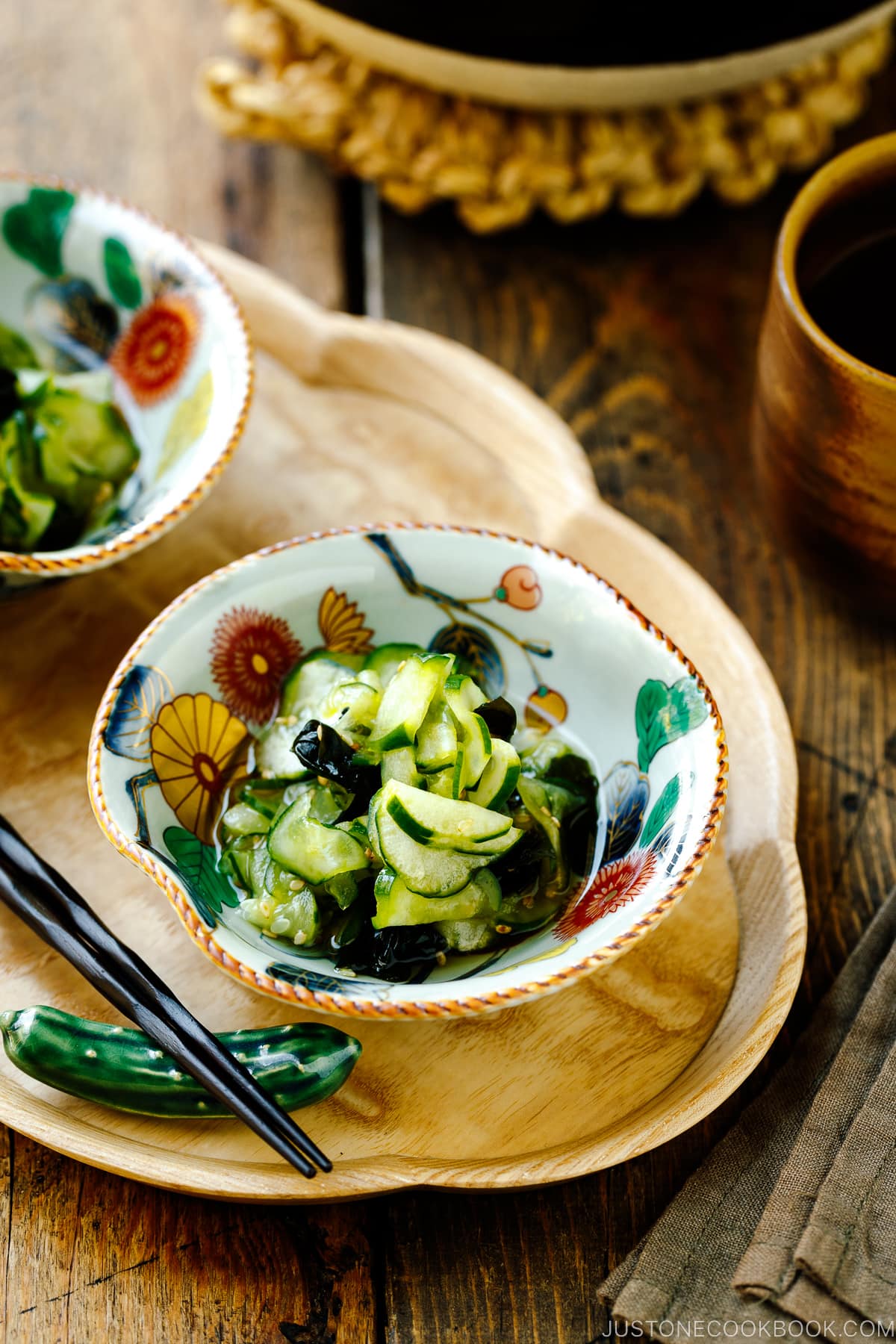
When cucumbers are at their peak in gardens and markets, we often make this refreshing Japanese Cucumber Salad called Sunomono (酢の物). It’s one of the most popular dishes at the dinner table in Japan, and it’s very easy to prepare quickly on any weeknight.
If you love Japanese salads, try my Japanese Potato Salad, Japanese Kani Salad, and Soba Noodle Salad recipes next!
Table of Contents
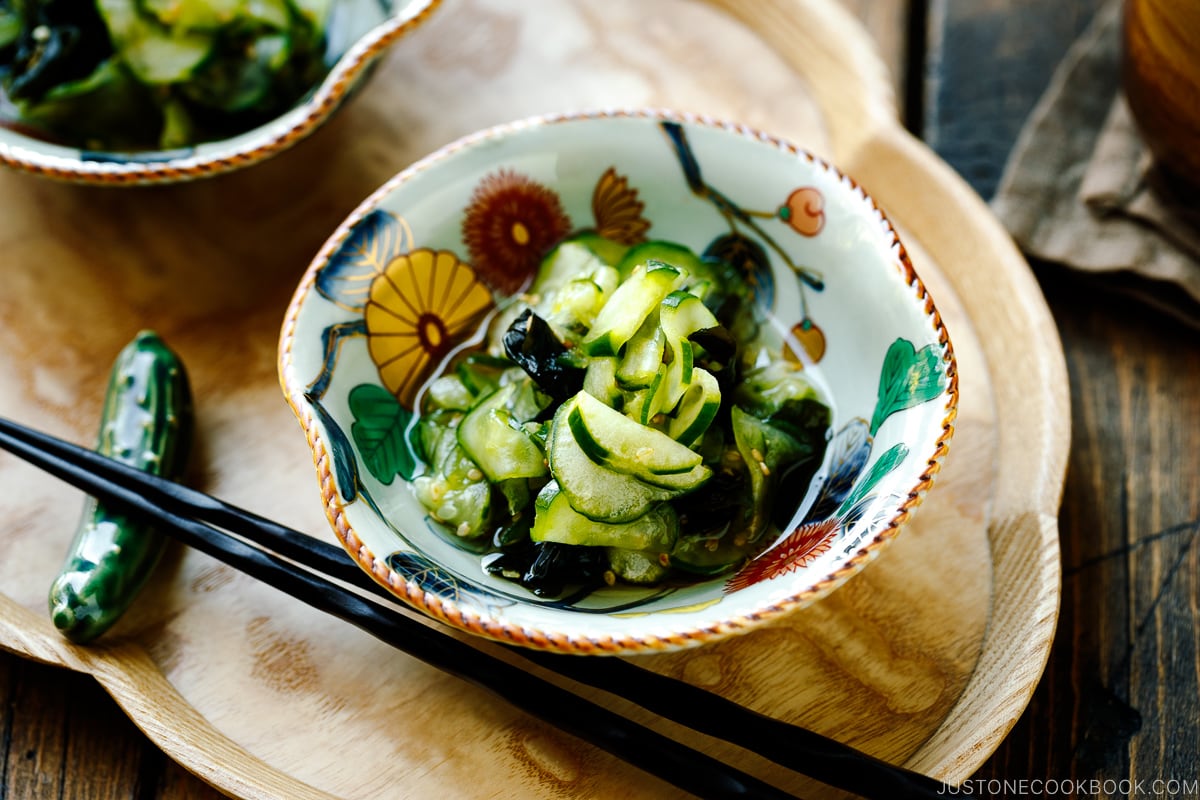
What is Sunomono?
When we say sunomono (酢の物), we typically mean Japanese cucumber salad. However, sunomono actually refers to any dish seasoned with vinegar (su, 酢). Commonly served to accompany a main dish, light and tangy vinegared dishes are a great start to any meal as the sourness helps whet the appetite. During the heat of summer when our bodies naturally gravitate towards ‘cooling’ foods, refreshing and crunchy cucumber salad makes a wonderful seasonal dish, especially alongside grilled fish or meat.
Why I Love This Recipe
- It has the perfect balance of sweet and tart – The dressing uses mild Japanese rice vinegar and sugar for a soft and rounded flavor.
- Brings a wonderful crunchy texture to your meal – We slice and salt the Japanese cucumbers and dress them with a light vinaigrette to enhance its crunch factor.
- It’s so quick and easy – This salad is ready in just 15 minutes from start to finish! I love making this quick dish on any night of the week.
- This classic Japanese salad goes with everything – This dish pairs beautifully with many dishes, whether they’re grilled, baked, fried, or simmered. It’s also vegan/vegetarian!
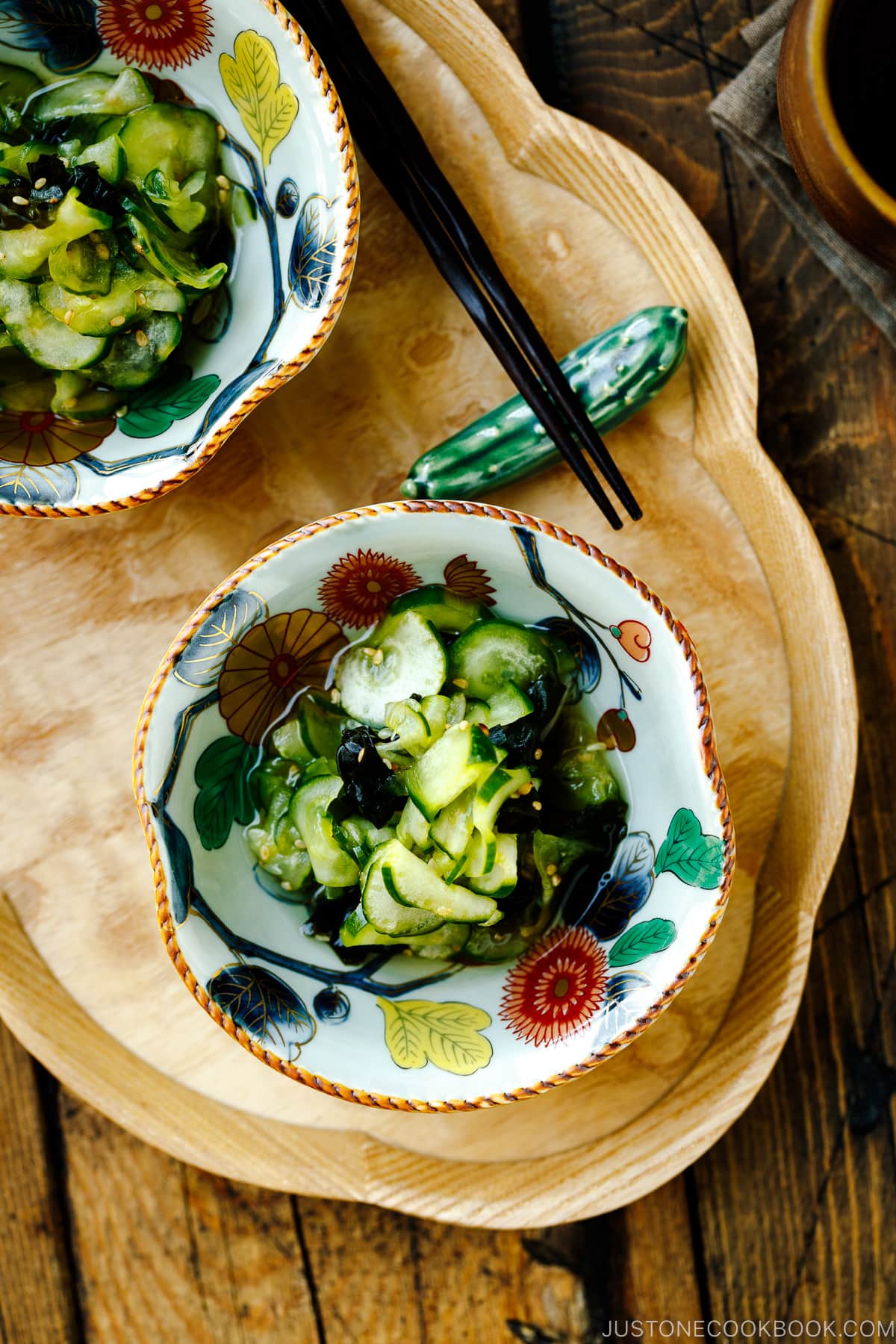
Ingredients for Japanese Cucumber Salad
- Japanese or Persian cucumbers
- Kosher salt
- Dried wakame seaweed
- Toasted white sesame seeds
- For the dressing:
- Rice vinegar (unseasoned)
- Sugar
- Kosher salt
- Soy sauce
Find the printable recipe with measurements below.
Jump to RecipeSubstitutions
- Japanese or Persian cucumbers: If you can’t find them, English cucumbers work well as a substitute as they don’t have large seeds like American cucumbers. Just scoop out the seeds with a spoon to prevent excess moisture from diluting the dressing.
- Dried wakame seaweed: Skip it if you’re not a fan or can’t find it, or swap it with other veggies—see my suggestions below.
- Sesame seeds: I love their nutty aroma, but sunomono in Japan is often made without them. Feel free to skip them.
- Soy sauce: For gluten free, use GF soy sauce.
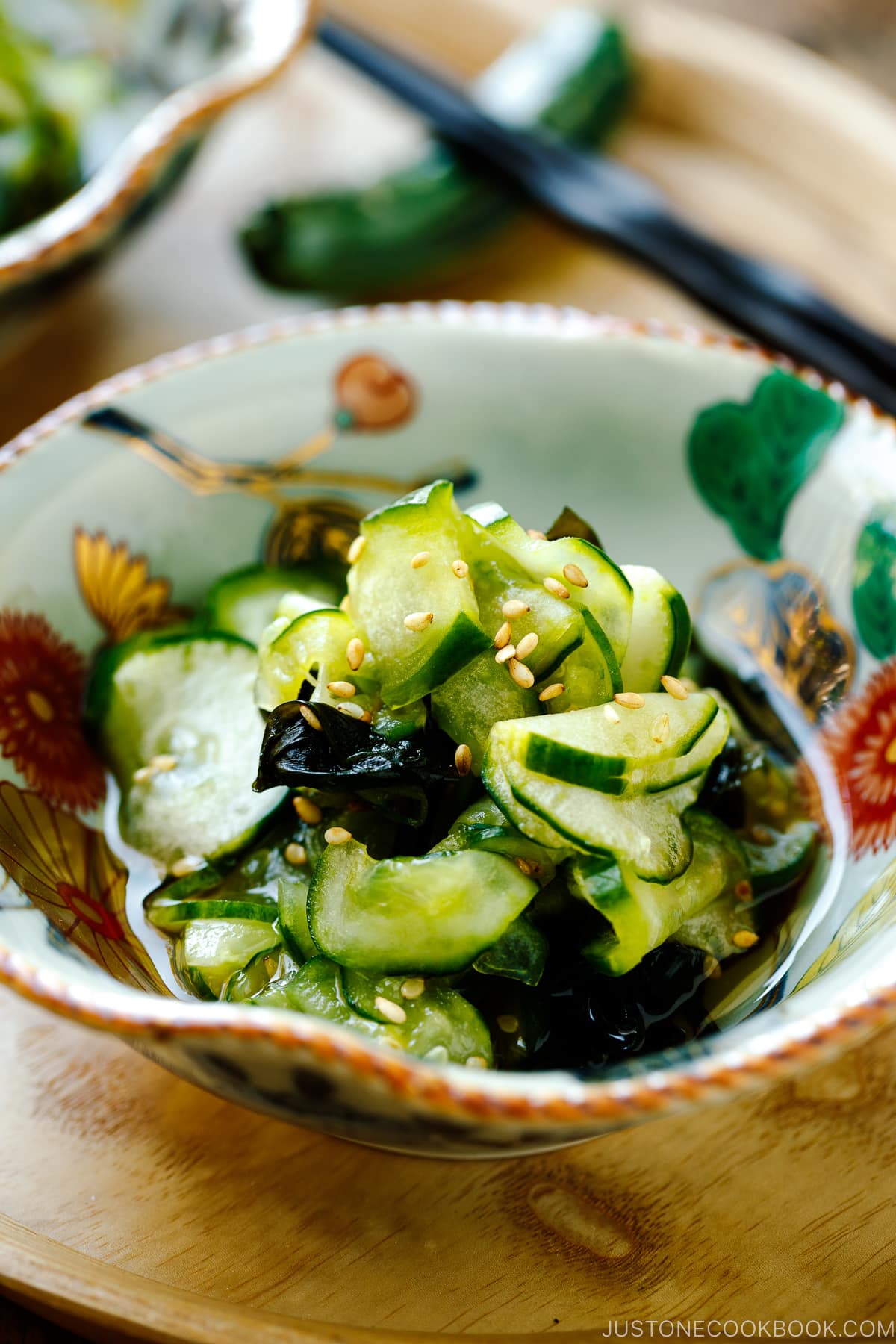
How to Make Sunomono
Preparation
Step 1 – Make the dressing. Combine the dressing ingredients in a saucepan and whisk over medium heat until the sugar dissolves completely. Alternatively, you can use a microwave-safe bowl and heat it in the microwave. Set aside to cool.
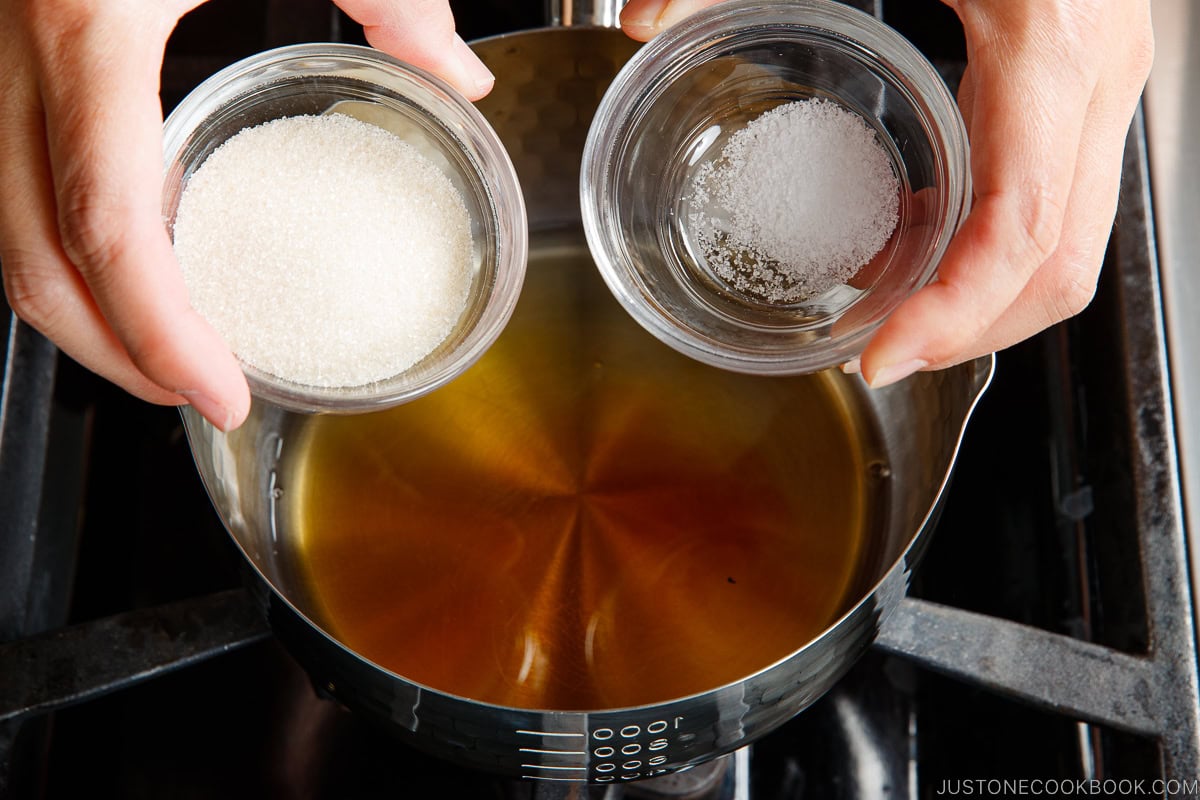
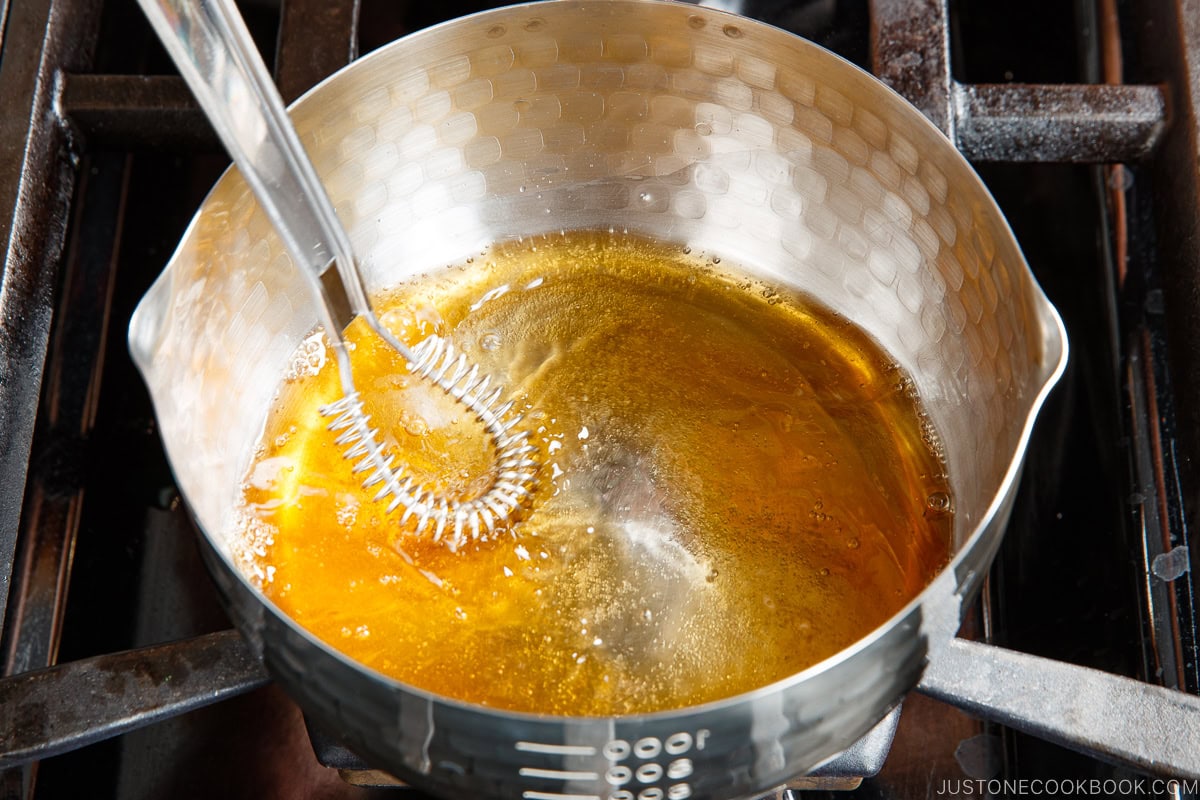
Step 2 – Rehydrate the dried wakame seaweed. Soak it in a bowl of water for 5 minutes.
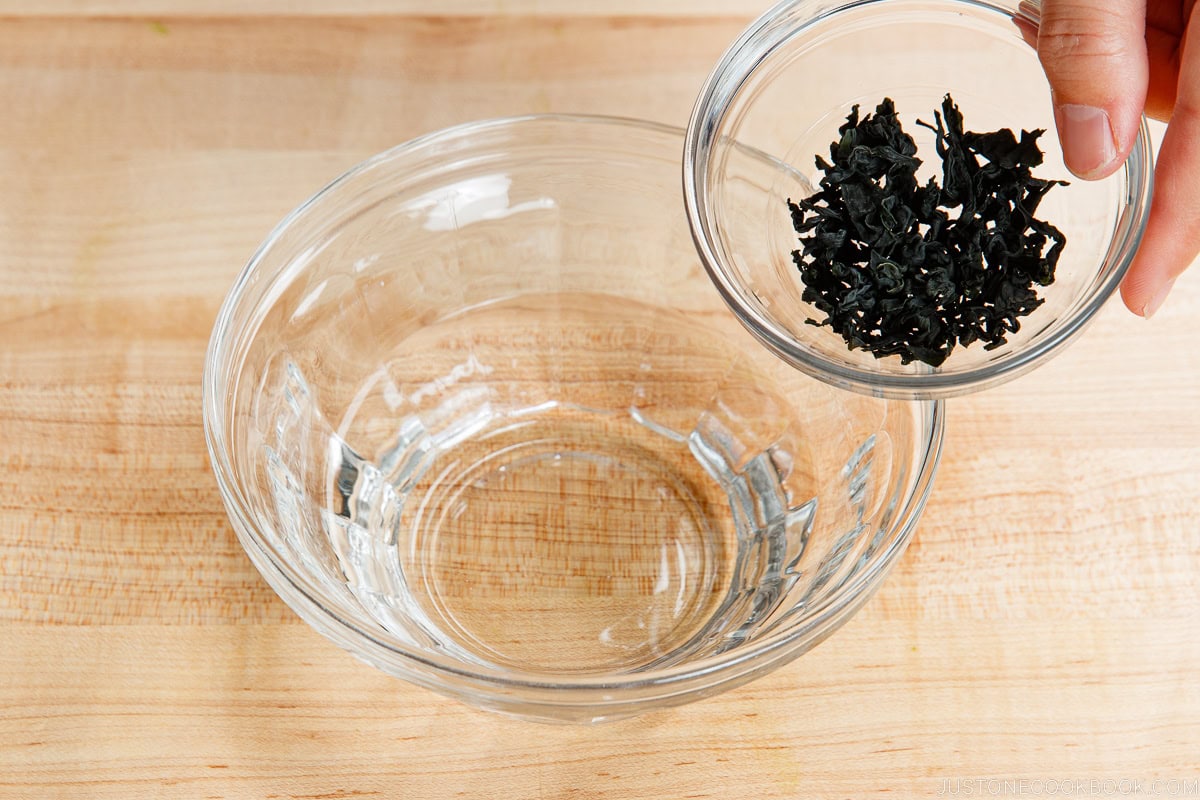
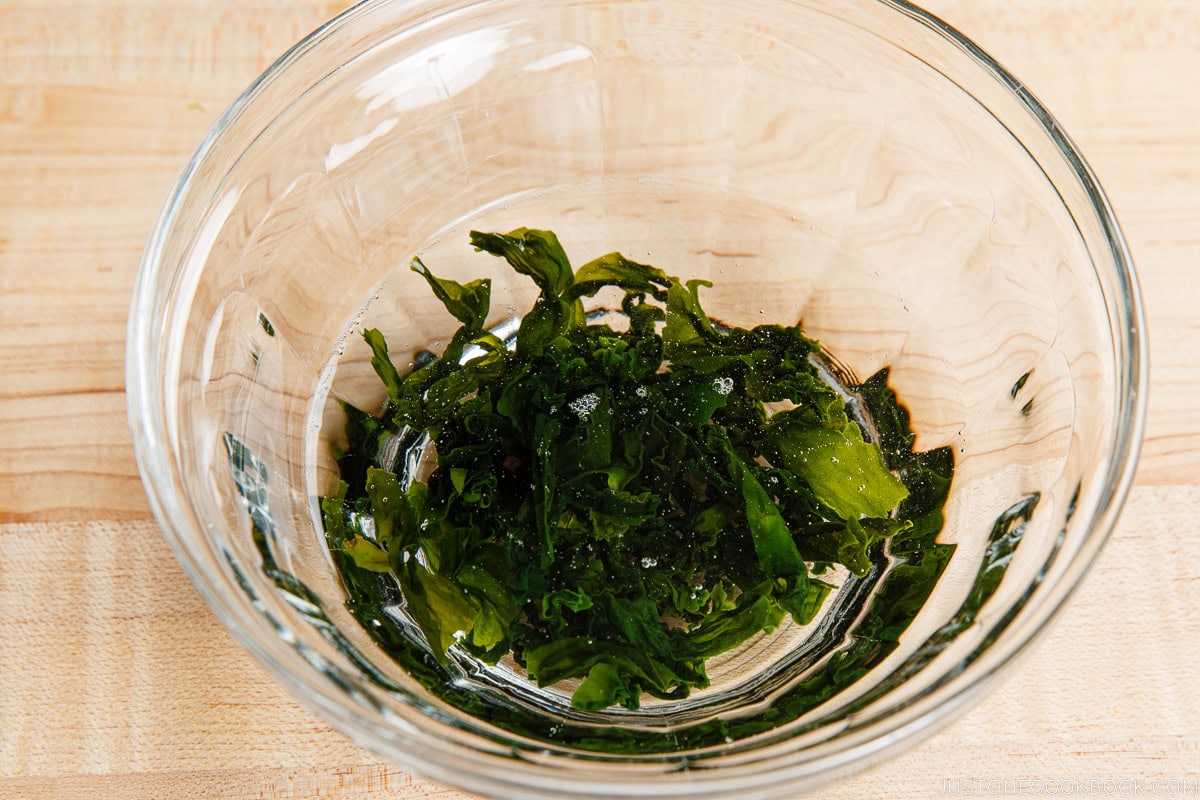
Step 3 – Peel, slice, and salt the cucumbers. Meanwhile, use a vegetable peeler to peel the skin in a striped pattern and slice them thinly into rounds with a sharp knife. Sprinkle with kosher salt, gently rub it in, and set aside for 5 minutes.
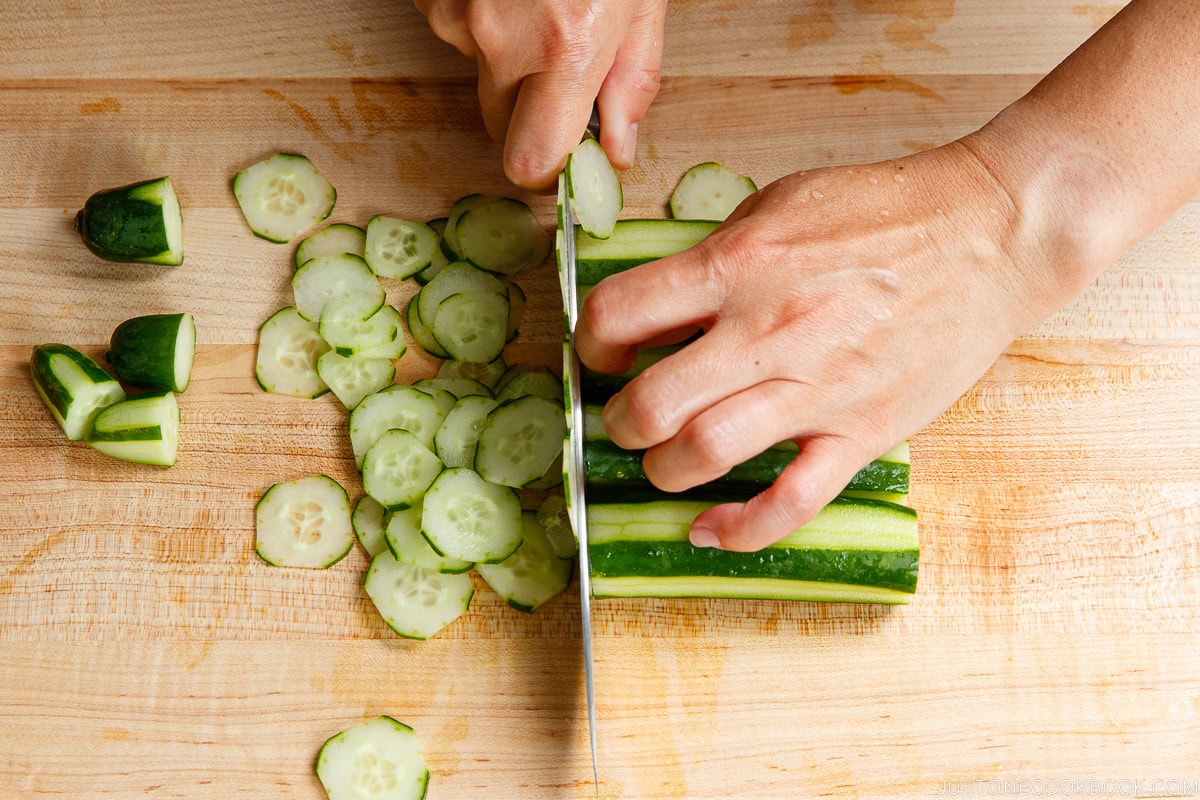
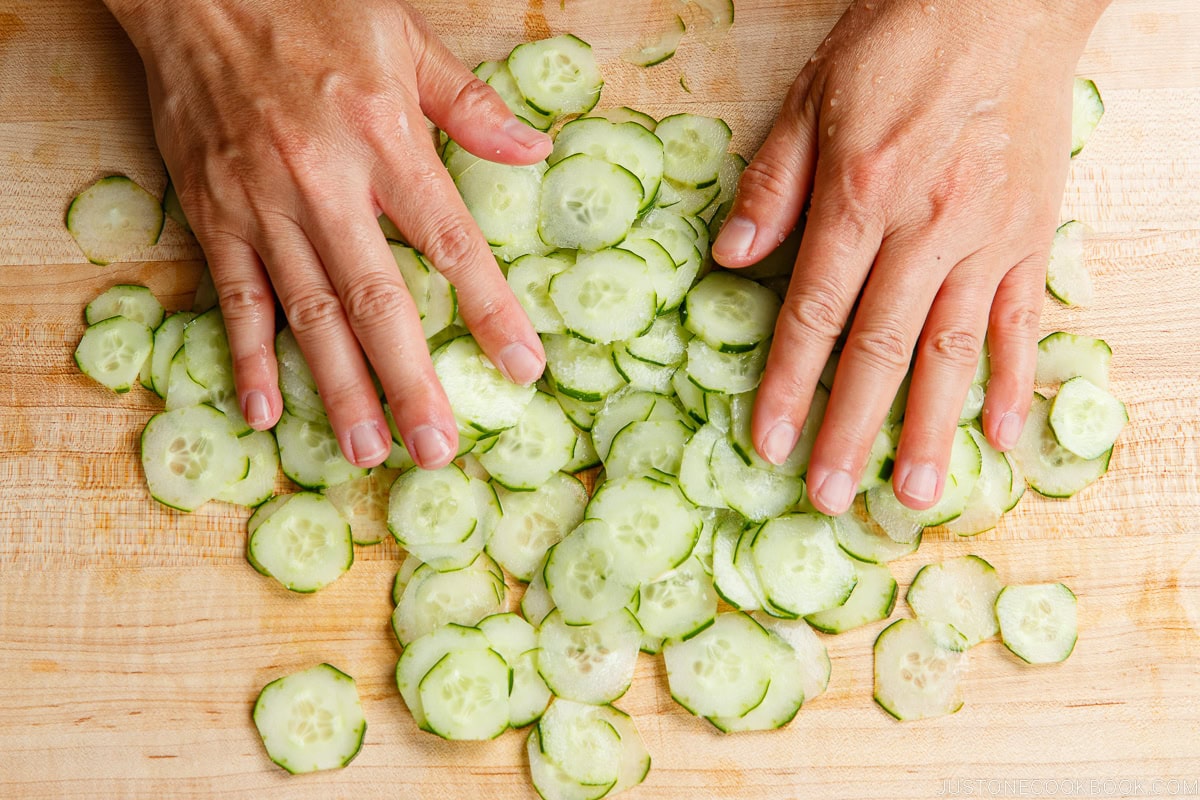
Assemble
Step 4 – Squeeze out the liquid. Squeeze out the rehydrated wakame seaweed and sliced cucumbers and add them to a medium bowl.
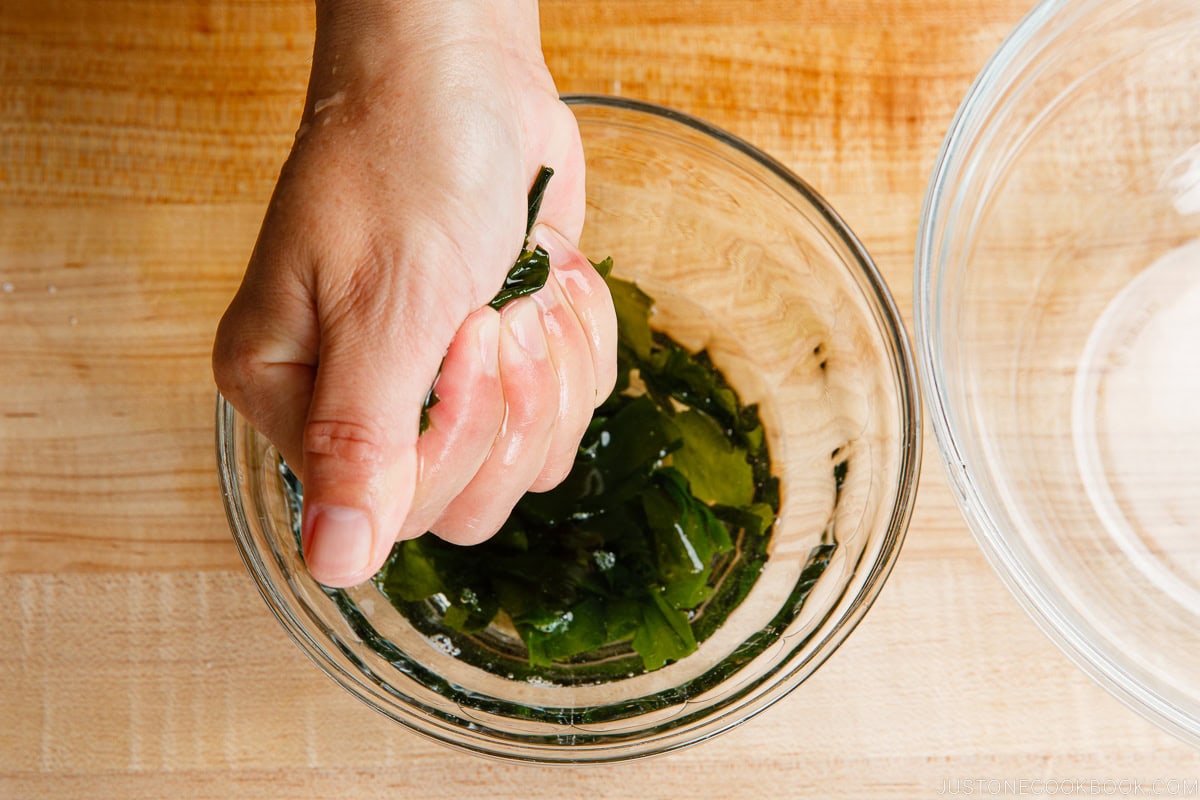
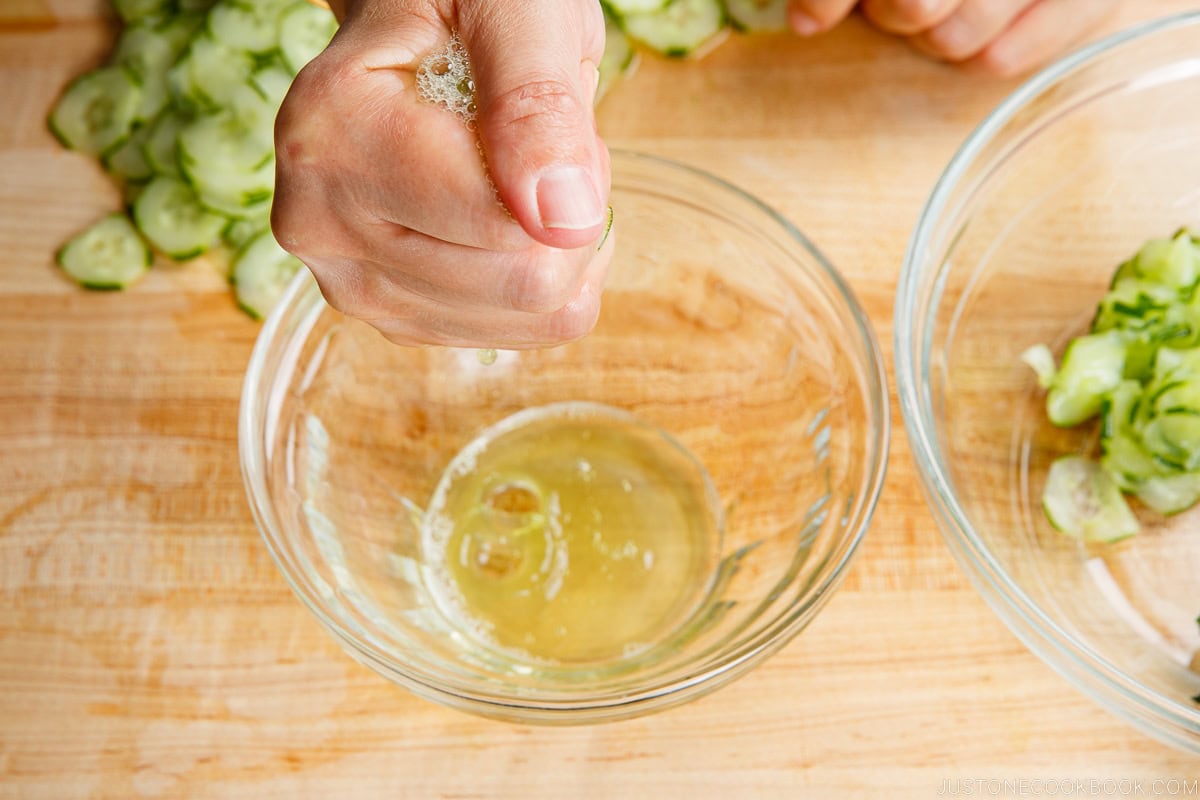
Step 5 – Toss in the dressing and serve immediately. Add the cooled dressing and sesame seeds and toss it all together. Optional – If you’re adding one of the optional ingredients, toss it in now.
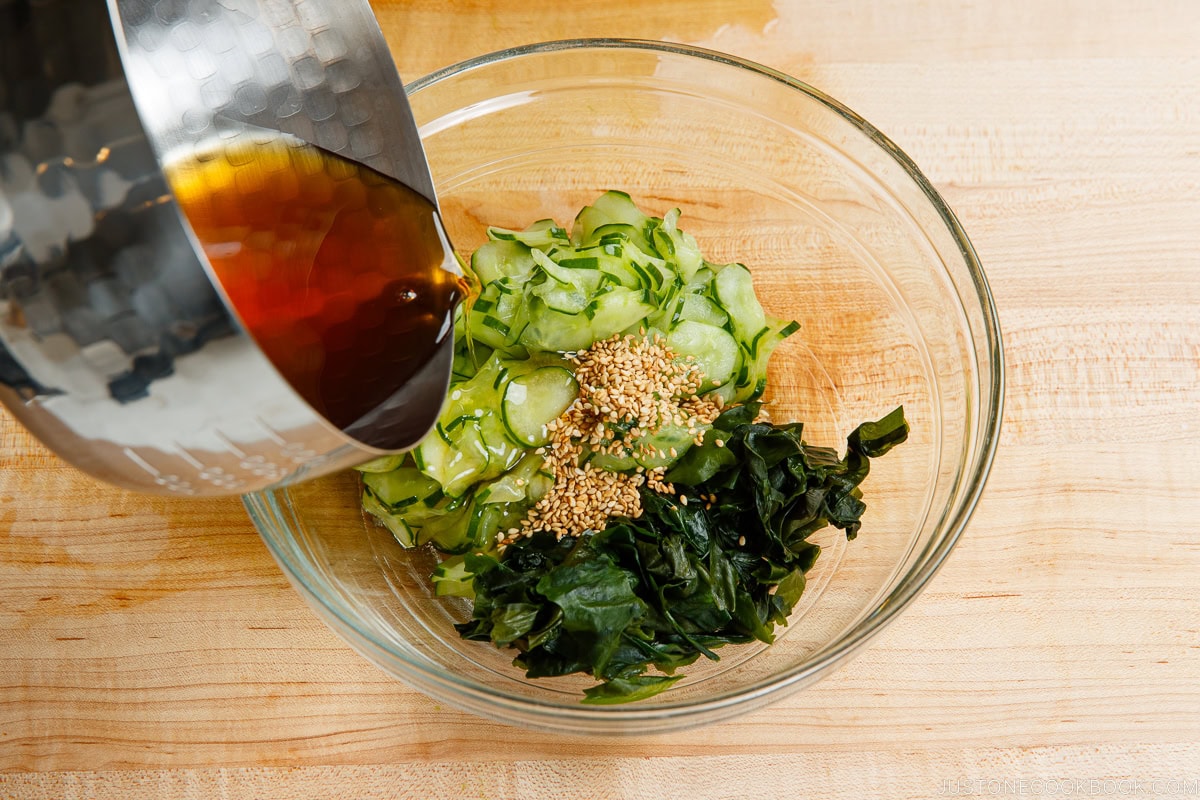
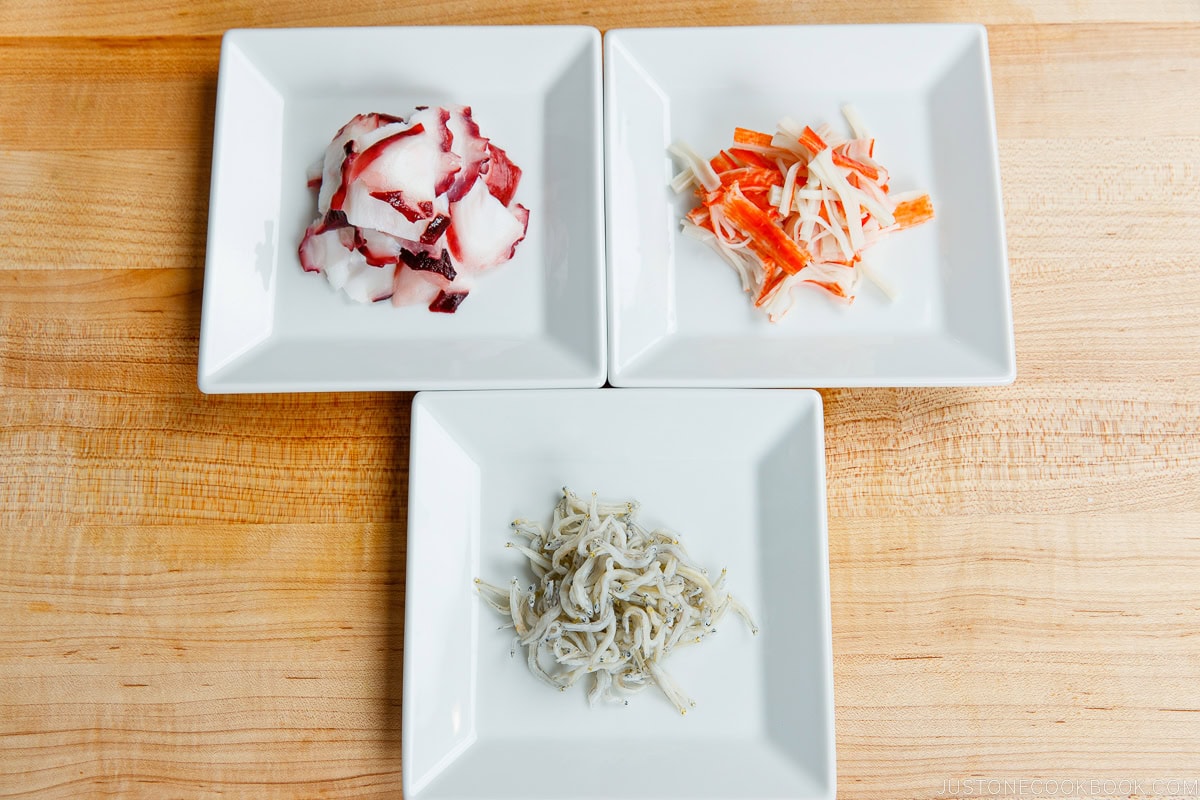
Then, serve the salad in individual bowls for a composed meal or in a large bowl to serve it family-style.
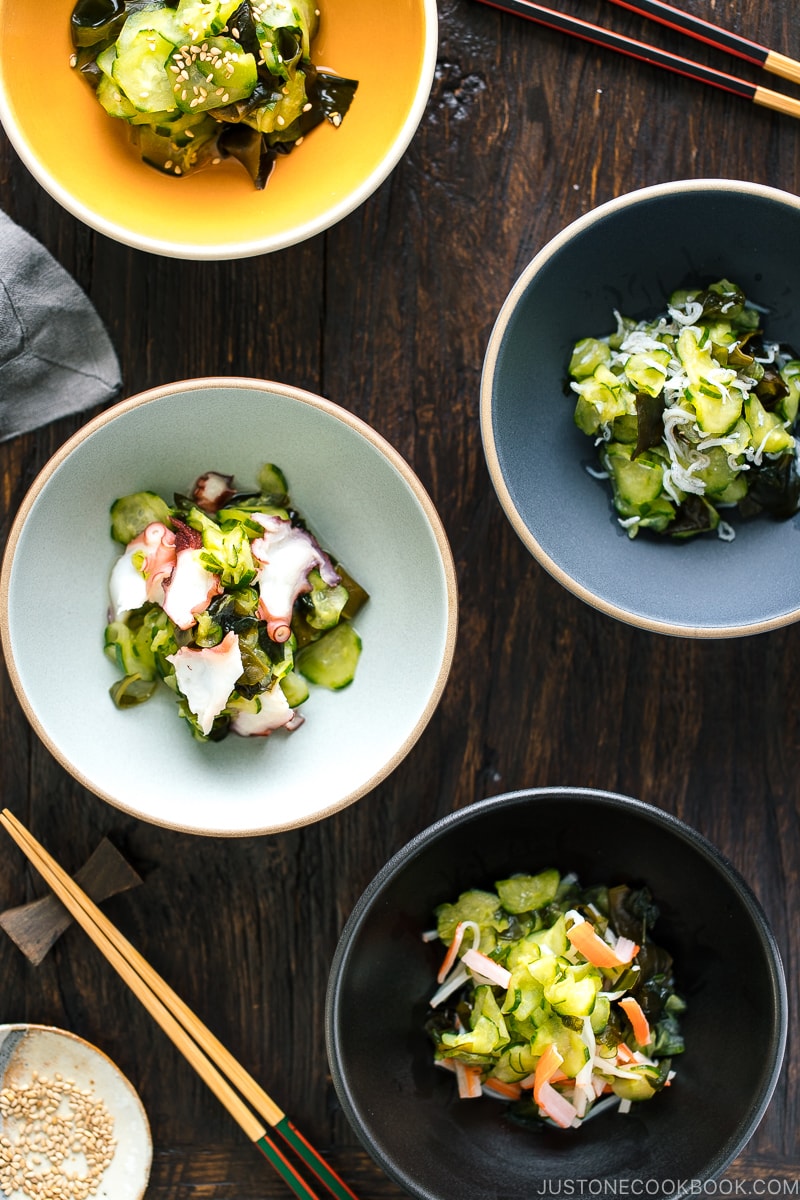
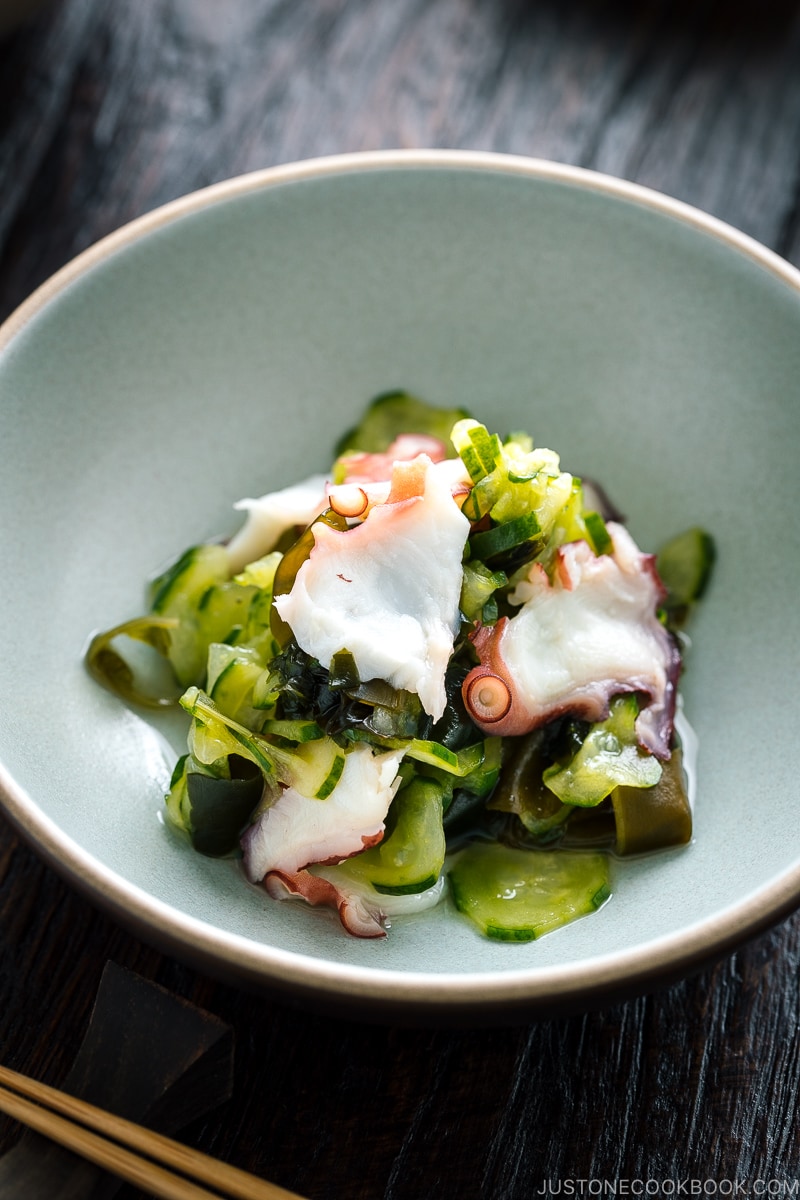
Nami’s Recipe Tips
- Choose Japanese or Persian cucumbers. These varieties are ideal for their small seeds and crunchy texture. Avoid American cucumbers that contain big seeds and more moisture. Their skin is also waxy and thick, and that’s not ideal for this salad.
- Generously salt the cucumbers. The salt helps draw out the moisture from the cucumbers so it does not dilute the salad dressing. This ensures a great crunch.
- Squeeze out the liquid from the wakame seaweed and cucumbers. If you don’t, the excess moisture will dilute the dressing and give the salad a bland taste.
Variations and Customizations
I’ve made sunomono salad countless times growing up in Japan and for my own family. I’ve made different versions depending on the season and the ingredients I have on hand. Following are a few of my suggestions on how you can change up this salad.
- Add seafood or fish. In Japan, it’s common to boost the protein, nutrition, and flavor of this dish by adding seafood or fish. I highly recommend trying thinly sliced boiled octopus, shirasu (boiled baby anchovies), or real/imitation crabmeat. You’ll find instructions for incorporating these optional ingredients at the end of the recipe below—plus, don’t miss my Japanese Cucumber Salad with Crab recipe!
- Add other crunchy and colorful vegetables. To add extra texture, fiber, and nutrients, try enhancing this salad with thinly sliced red radish, crisp strips of orange carrot, or white or red onion.
- Crush the sesame seeds for a different texture. I leave toasted sesame seeds whole in this recipe, but you can also grind them lightly in a mortar and pestle and mix the crushed seeds with the dressing. Check out my Cucumber Salad with Sesame Soy Vinaigrette recipe!
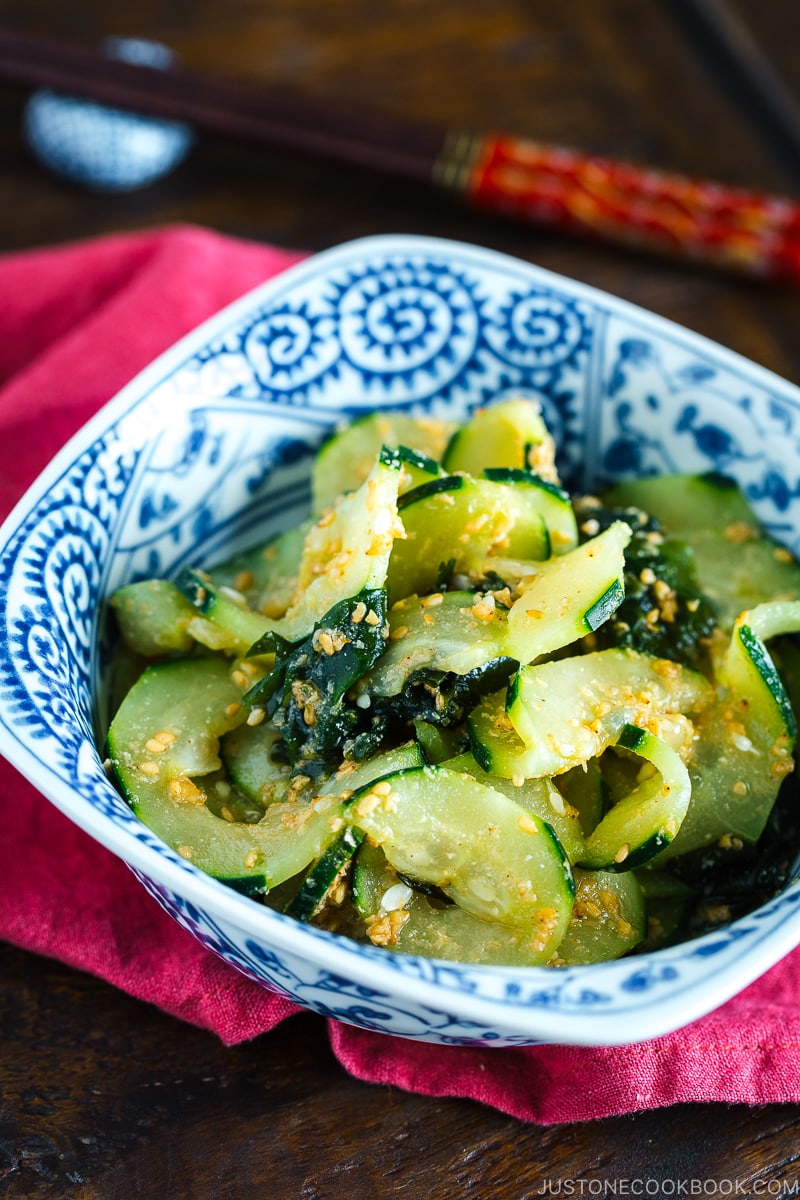
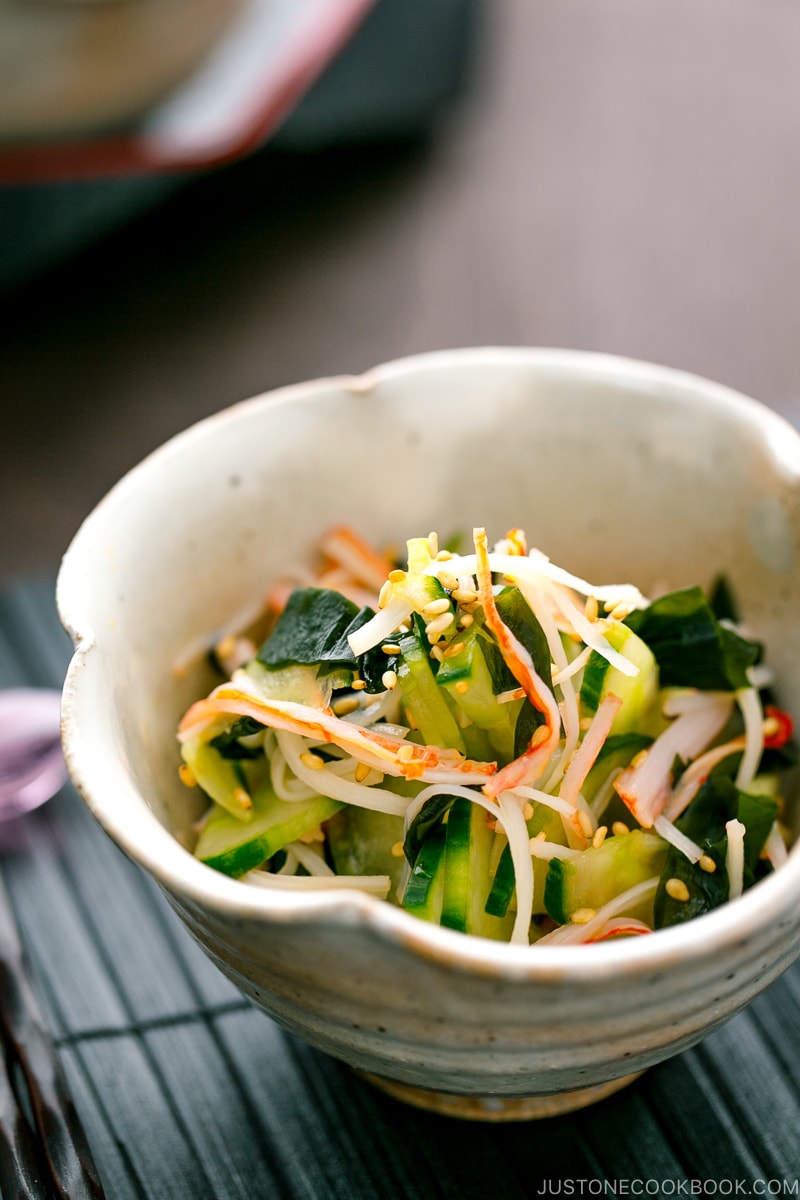
What to Serve with Sunomono
This refreshing salad is the perfect accompaniment to many fish or meat dishes. It’s also a classic side for an ichiju sansai (一汁三菜 ) Japanese meal composed of one soup and three dishes. Below are some iconic recipes that I suggest pairing with sunomono salad.
- With fish: The light cucumber taste complements the delicate flavors of classic Miso Cod and Teriyaki Salmon.
- With meat: The crunchy, sweet-and-sour salad is a wonderful counterpoint to rich meat dishes like Baked Chicken Katsu and Simmered Beef and Tofu.
- With another side dish: In Japanese cuisine, we often serve in the same meal a variety of plant-forward dishes like Spinach Ohitashi and Okra with Ginger Soy Sauce.
- With rice: When crispy and sweet corn is in season, I love making Japanese Corn Rice.
- With soup: Hearty and comforting Tonjiru (Pork and Vegetable Miso Soup) is a home-cooking classic that soothes the soul.
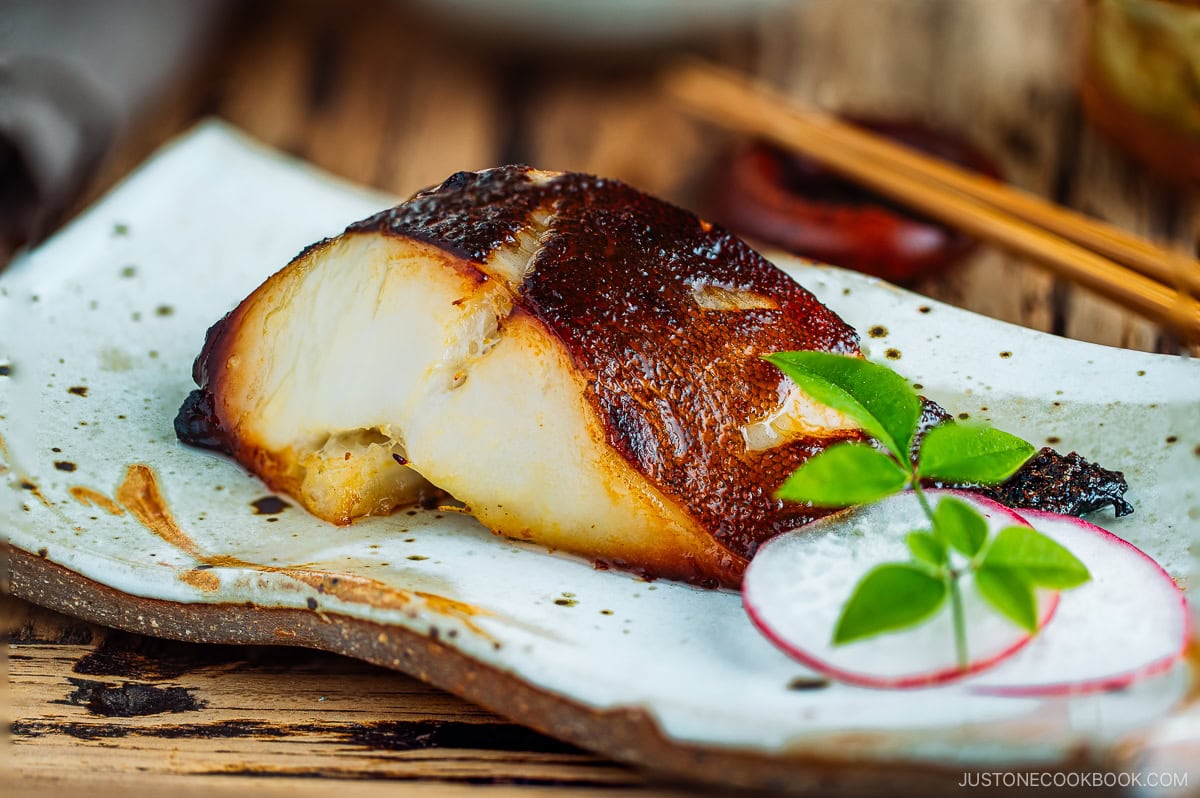
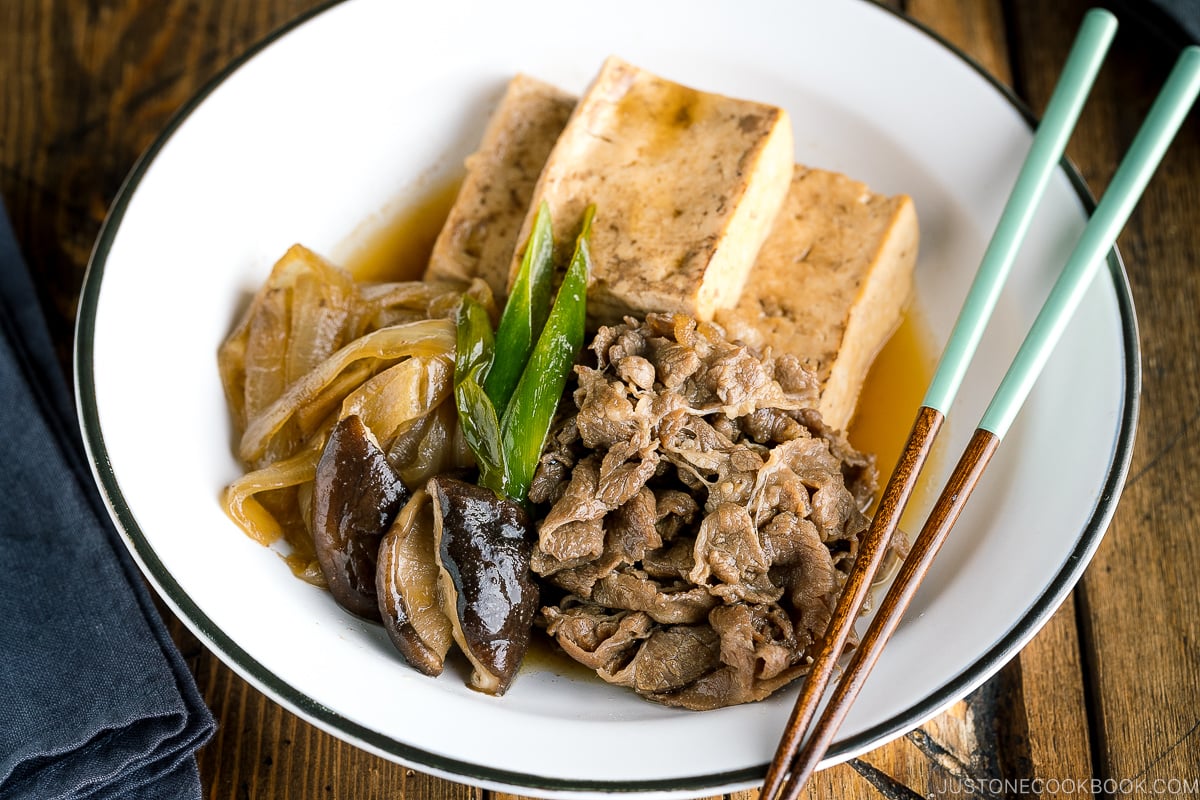
Storage Tips
To store: Keep in an airtight container and store in the refrigerator for up to 2–3 days (2 days for the seafood variations and 3 days for the classic version). However, the cucumber may release more moisture and the sauce may get diluted, so enjoy it soon!
Frequently Asked Questions
I don’t recommend it, as you may find the vinegar flavor is too strong. If you must decrease the sugar amount, please taste the dressing after adding the cucumbers, then you can dilute the dressing with a very small amount of Dashi (Japanese soup stock), Vegan Dashi, or water.
You can easily prep the dressing a day or two in advance. You can also prep the cucumbers and wakame a few hours ahead. To keep the cucumbers crunchy, I recommend tossing the dressing into the ingredients just before serving. The cucumber will release more moisture and the sauce may get diluted, so enjoy it soon.
Yes! Set the slicer to cut thin slices, but no so paperthin that they get damaged easily when squeezed of their excess liquid.
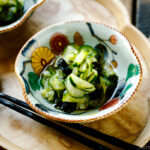
Japanese Cucumber Salad (Sunomono)
Video
Ingredients
For the Dressing
- 4 Tbsp rice vinegar (unseasoned)
- 2 Tbsp sugar
- ½ tsp Diamond Crystal kosher salt
- ½ tsp soy sauce (use GF soy sauce for gluten-free)
For the Sunomono
- 2 Japanese cucumbers (or 3 Persian cucumbers; 11 oz, 300 g)
- 1 tsp Diamond Crystal kosher salt
- 1 Tbsp dried wakame seaweed (3 g; 20–30 g after rehydration)
- ½ Tbsp toasted white sesame seeds
For the Variations (Optional)
- 4 pieces real or imitation crabmeat (skip for vegan/vegetarian)
- 2 oz octopus sashimi (boiled octopus) (skip for vegan/vegetarian)
- 2 Tbsp shirasu (boiled salted baby anchovies) (skip for vegan/vegetarian)
Instructions
- Gather all the ingredients.
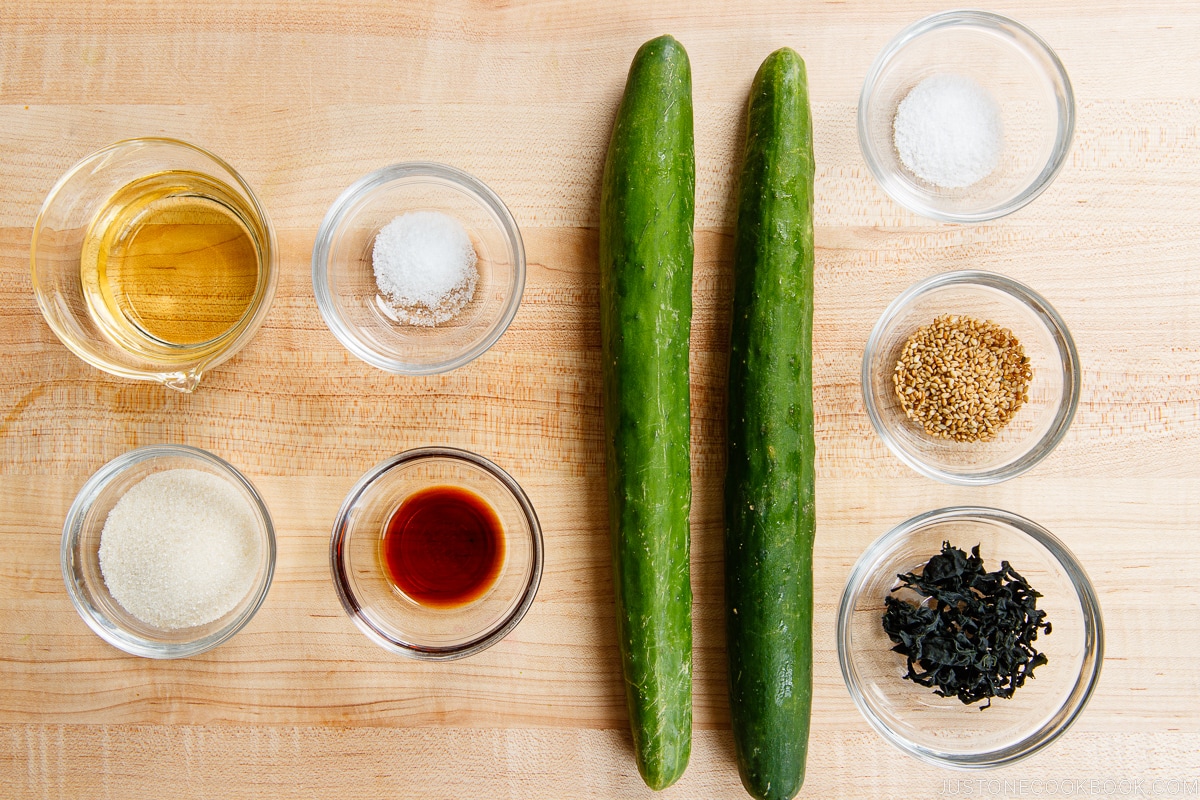
To Make the Dressing
- In a saucepan, combine 4 Tbsp rice vinegar (unseasoned), 2 Tbsp sugar, ½ tsp Diamond Crystal kosher salt, and ½ tsp soy sauce. Alternatively, you can use a microwave-safe bowl and heat it in the microwave until the sugar dissolves.
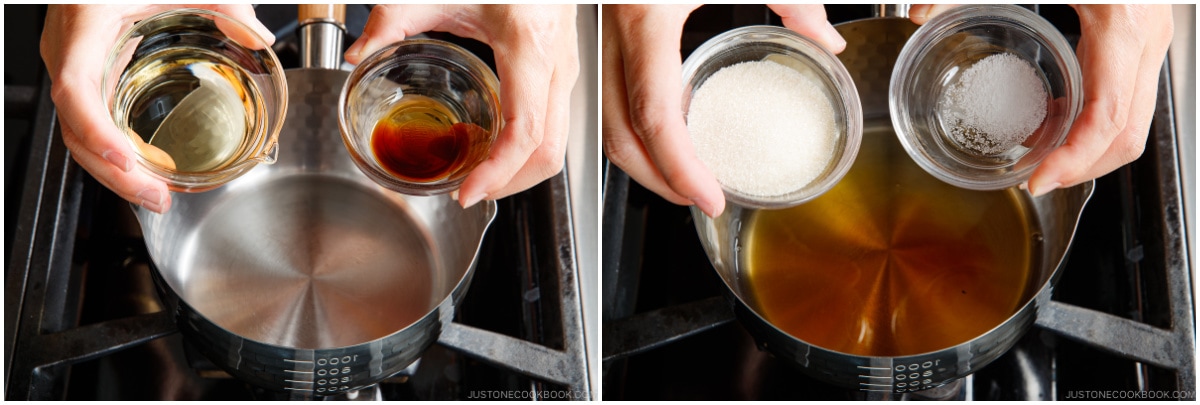
- Place the saucepan over medium heat and whisk the ingredients together well (I use this whisk). Once the sugar dissolves completely, remove from the heat and let it cool. Tip: If you decrease the sugar amount (which I don't recommend), you may find that the vinegar tastes too strong. If it's still too strong for you after adding the cucumbers, you can dilute it at this stage with a very small amount of Dashi (Japanese soup stock), Vegan Dashi, or water.
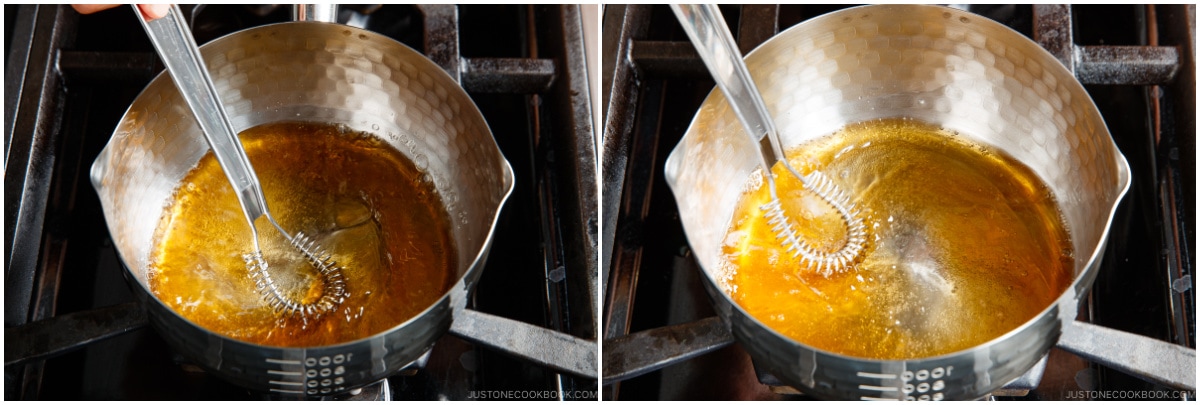
To Make the Sunomono
- Soak 1 Tbsp dried wakame seaweed in a bowl of water and let it rehydrate for 5 minutes.
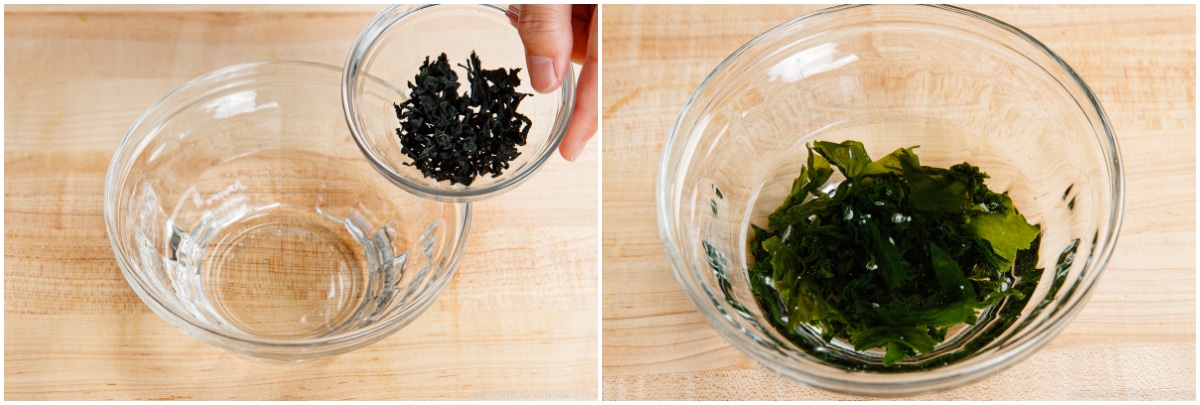
- Meanwhile, peel the skin of 2 Japanese cucumbers alternately to create a striped pattern. Then, thinly slice the cucumbers into rounds.
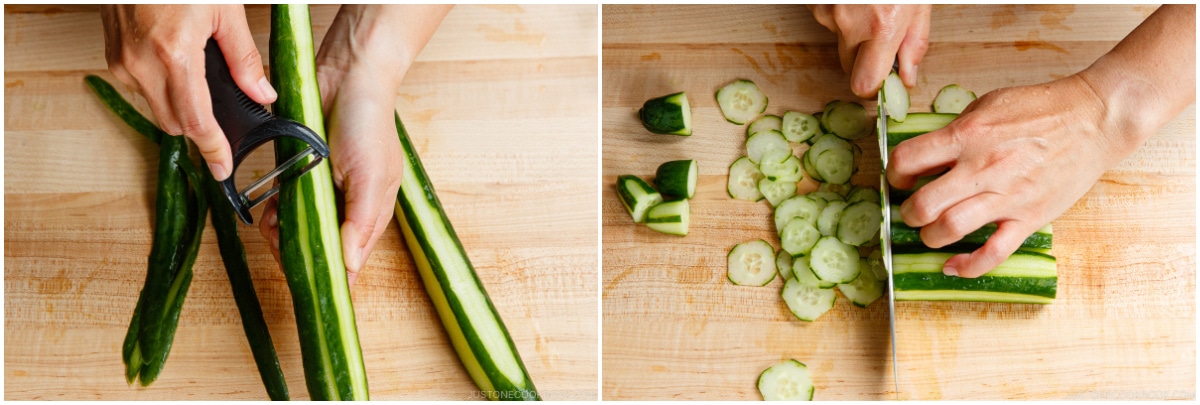
- Sprinkle 1 tsp Diamond Crystal kosher salt on the cucumber and gently massage it in. Set aside for 5 minutes. The salt draws out the moisture from the cucumbers so it doesn't dilute the dressing later.
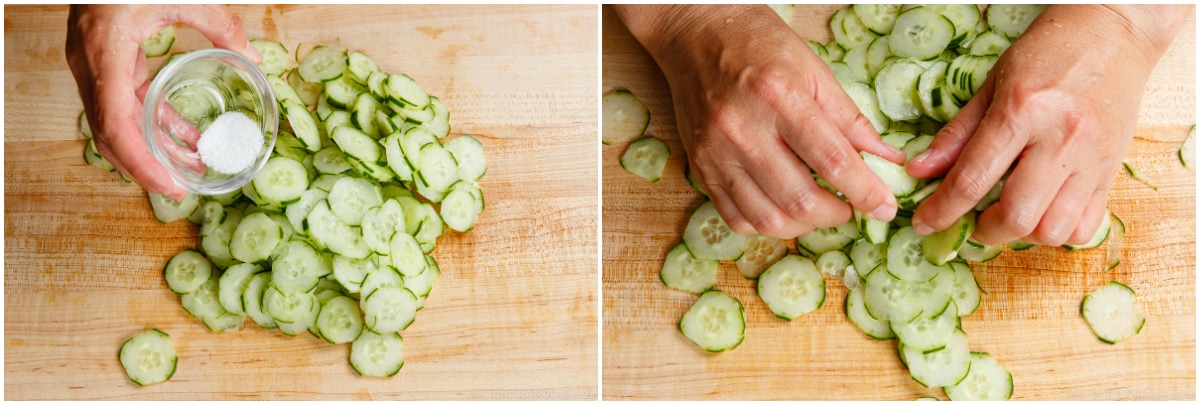
- Use your hand(s) to squeeze out the liquid from the rehydrated wakame seaweed and add it to a medium bowl.
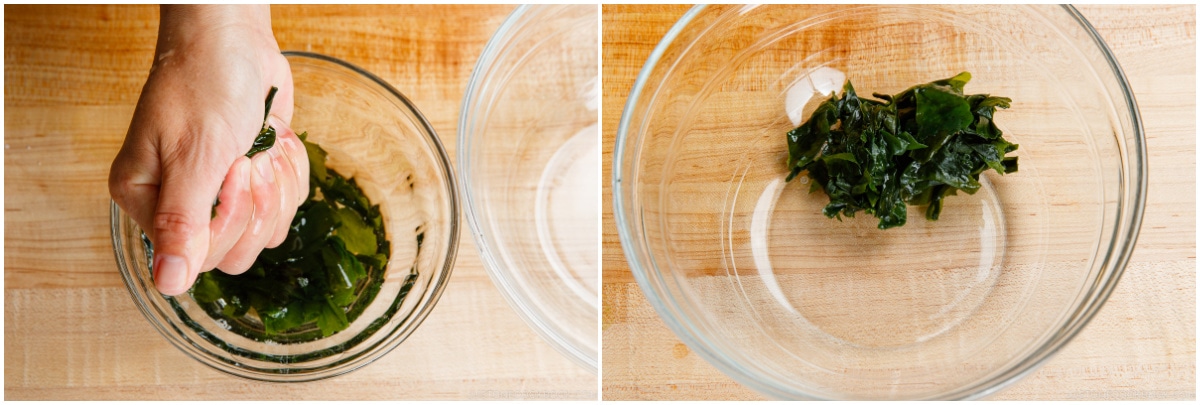
- Squeeze out the liquid from the cucumber slices. Add them to the bowl with the wakame.
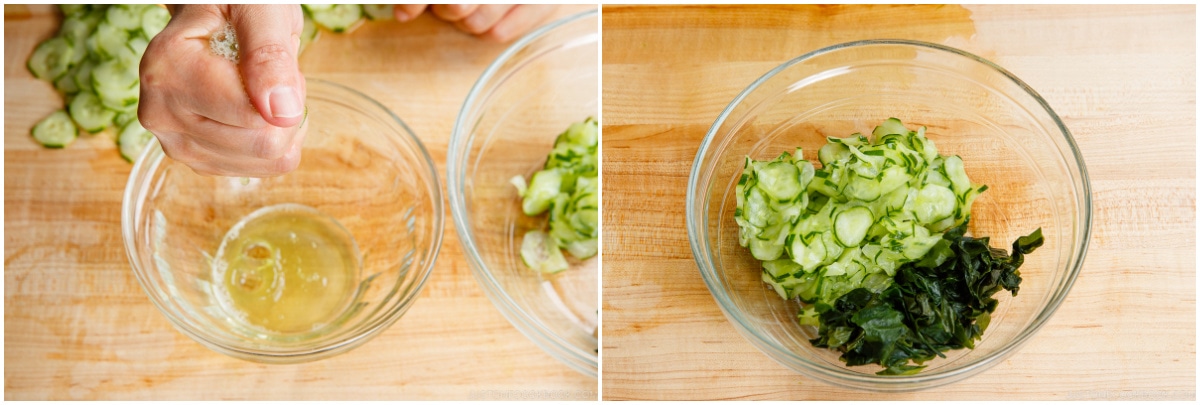
- Add ½ Tbsp toasted white sesame seeds and pour the dressing on top.
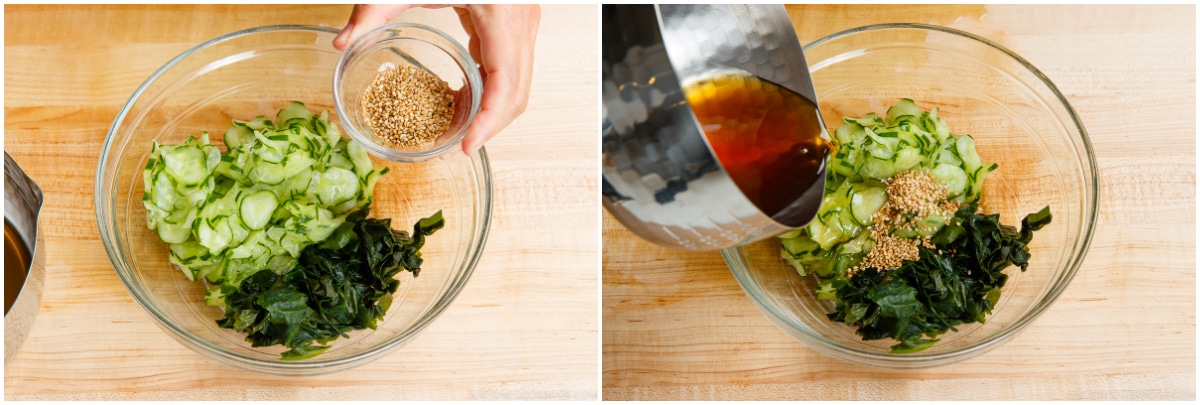
- Toss to combine everything together. Serve in individual bowls or a large serving bowl.
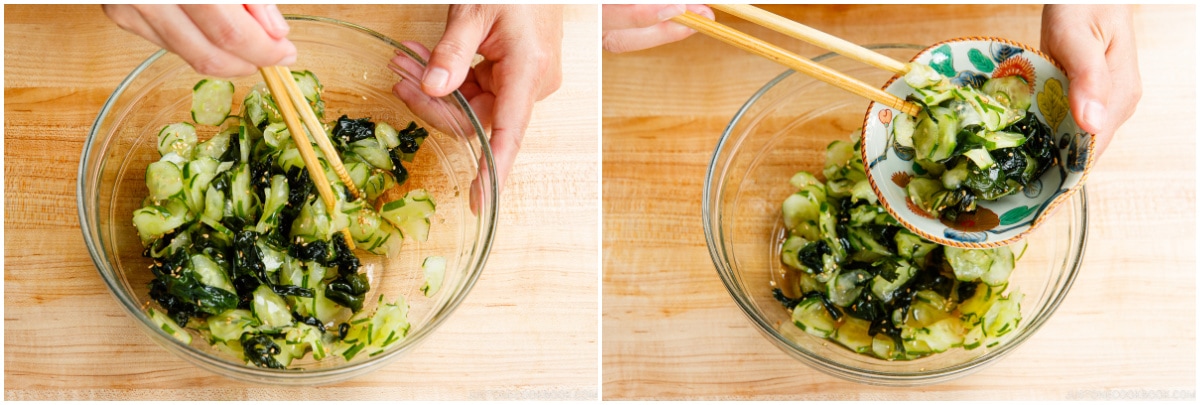
To Make the Variations
- Crabmeat: Cut 4 pieces real or imitation crabmeat into thirds lengthwise. Add to the cucumber and wakame seaweed mixture in Step 7. Boiled octopus: Slice 2 oz octopus sashimi (boiled octopus) thinly. Add in Step 7. Boiled salted baby anchovies: Add 2 Tbsp shirasu (boiled salted baby anchovies) in Step 7.
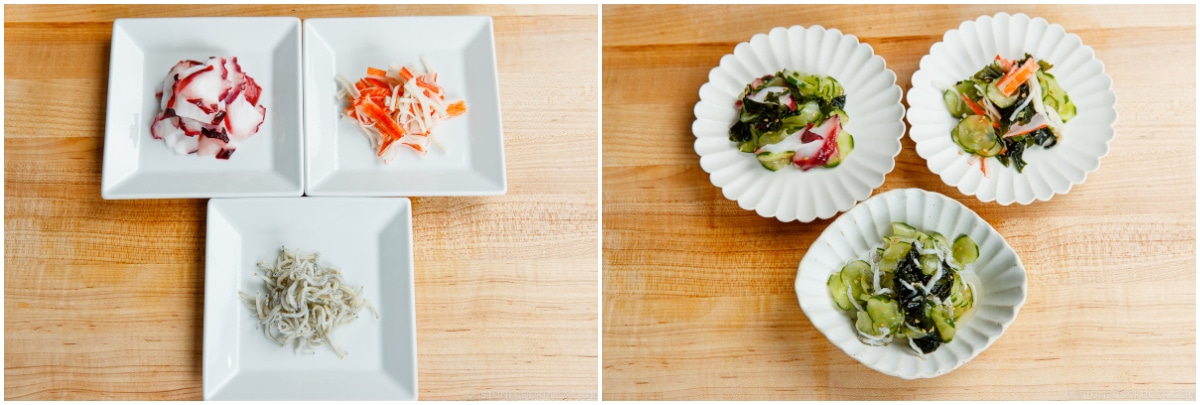
To Store
- Keep in an airtight container and store in the refrigerator for up to 3 days for the classic version and 2 days for the seafood variations. However, the cucumber may release more moisture and dilute the sauce, so enjoy it soon!
Nutrition
Editor’s Note: This post was originally published on February 23, 2012. It was updated with a new video and images on September 22, 2023, and republished with more helpful information on February 1, 2025.
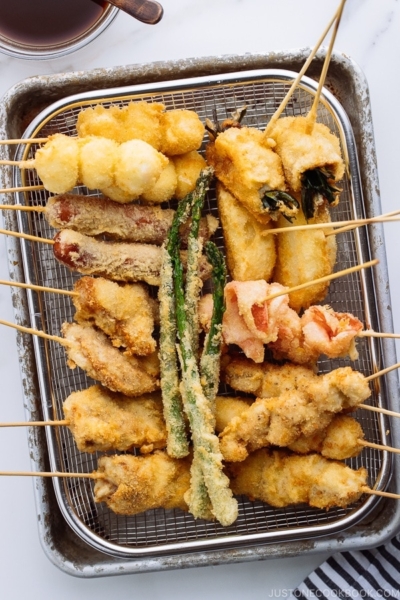
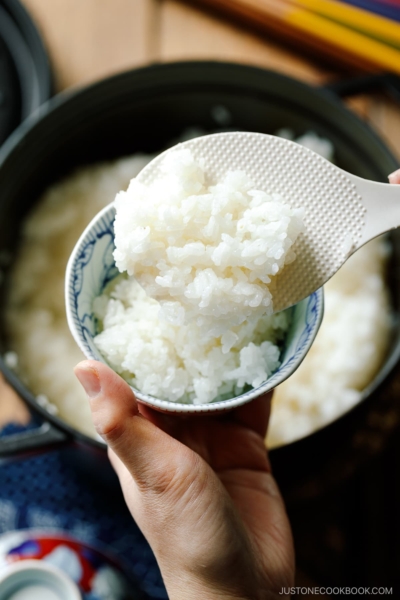
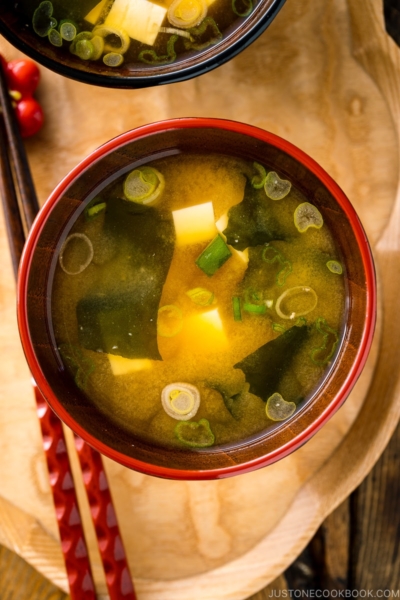






I really enjoyed this recipe but my sunomono was way too salty. I’ve seen other recipes will wash the salt off the cucumber slices after salting for 5+ minutes. Was there a salt washing step missing that should be included here in the recipe to ensure the sunomono isn’t too salty?
Hello, John. Thank you for trying Nami’s recipe.
Nami did not wash off the salt for this dish, but if you prefer, you can. The saltiness could also be due to the type of salt used. She used Diamond Crystal Kosher salt. We hope this helps!
Similar to namasu, but no ginger, and you added shoyu? Looks good. Thank you for sharing!
Hi, Charleen! Thank you for reading Nami’s post and trying her recipe!
We hope you enjoyed the dish! 🤗
Great, easy to follow recipe. I made this recipe for my Japanese parents and their friends and they said they really liked it. The sliced octopus was a great addition to it.
Hello Angie! We are so happy to hear everyone enjoyed Nami’s recipe!
Thank you for trying her recipe and for your kind feedback. Happy Cooking!
Hello! I want to try this recipe today, but I was wondering if I can heat the dressing in the microwave? Would this be possible? Thank you in advance!
Hi Trang! Yes, you can use a microwave-safe bowl and heat it in the microwave until the sugar dissolves. Hope you enjoy this recipe!
Great recipe, thank you! Would you be able to freeze this, or would it change the texture?
Hi, Lindsay! Thank you for trying Nami’s recipe.
It is possible to freeze this dish, but the texture would be much softer and not as great.
If you freeze them, be sure to include the dressing.